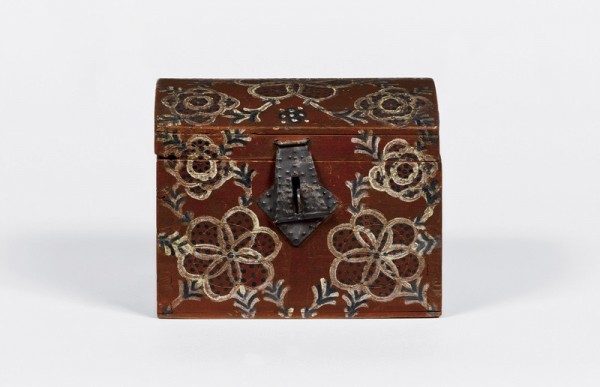
Composite illustration showing Box, Lancaster County, Pennsylvania, 1800–1840. Tulip poplar, pine. H. 5 1/8", W. 6 3/8", D. 4 5/8". (Courtesy, Winterthur Museum; photo, Gavin Ashworth.)
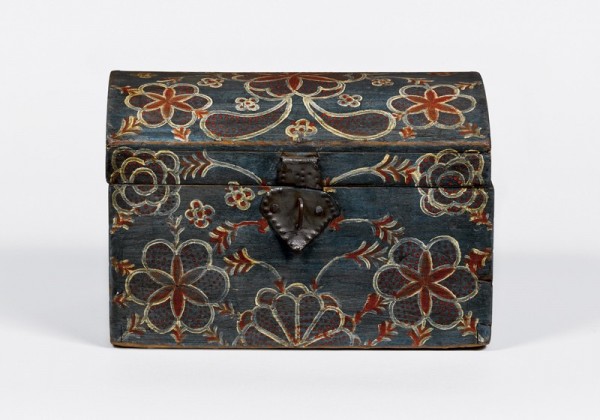
Composite illustration showing Box, Lancaster County, Pennsylvania, 1800–1840. Tulip poplar. H. 6 3/4", W. 10", D. 6 5/8". (Private collection; photo, Gavin Ashworth.)

Composite illustration showing Box, Lancaster County, Pennsylvania, 1800–1840. Tulip poplar, pine. H. 11 1/8", W. 14 7/8", D. 11 7/8". (Courtesy, Winterthur Museum; photo, Gavin Ashworth.)

Map of southeastern Pennsylvania highlighting Lancaster County and environs.

Box, Lancaster County, Pennsylvania, 1800–1840. Tulip poplar. H. 12 1/2", W. 16", D. 10 1/2". (Courtesy, Winterthur Museum; photo, Gavin Ashworth.)
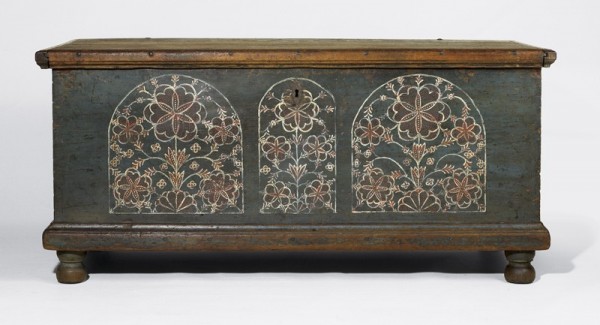
Chest, Lancaster County, Pennsylvania, 1785–1820. Pine and oak. H. 24", W. 49 1/2", D. 22 3/4". (Private collection; photo, Olde Hope Antiques, Inc.)

The American Corner in Elie and Viola Nadelman’s Museum of Folk Arts, Riverdale, New York, late 1920s. (Courtesy, Cynthia Nadelman.)
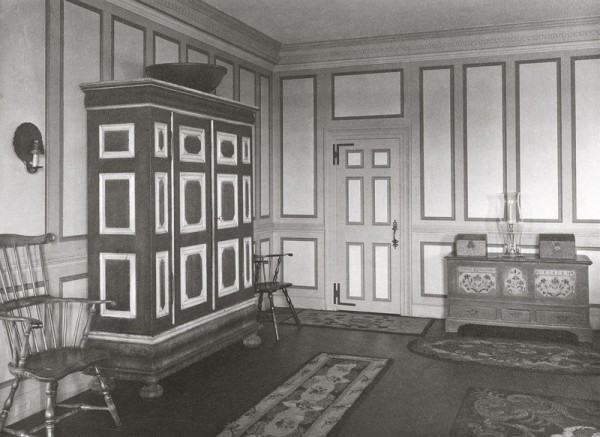
Entrance hall at Chestertown House, Southampton, Long Island, ca. 1928. (Courtesy, The Winterthur Library: Winterthur Archives.)
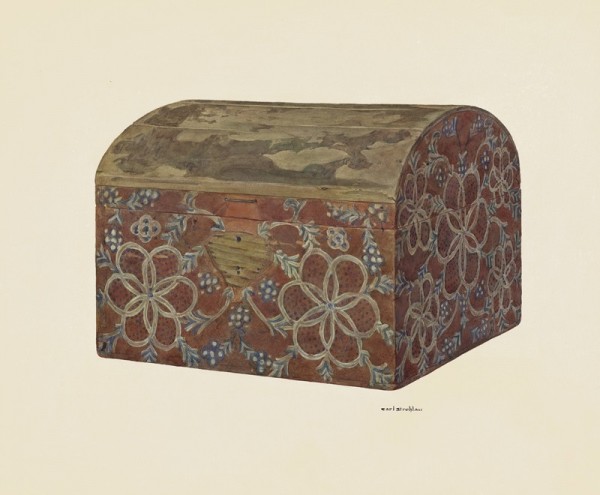
Carl Strehlau, “Pa. German Chest,” Index of American Design, ca. 1940. (Courtesy, Board of Trustees, National Gallery of Art, Washington, D.C.)

Carol Larson, “Wood Box or Chest,” Index of American Design, ca. 1937. (Courtesy, Board of Trustees, National Gallery of Art, Washington, D.C.) 8
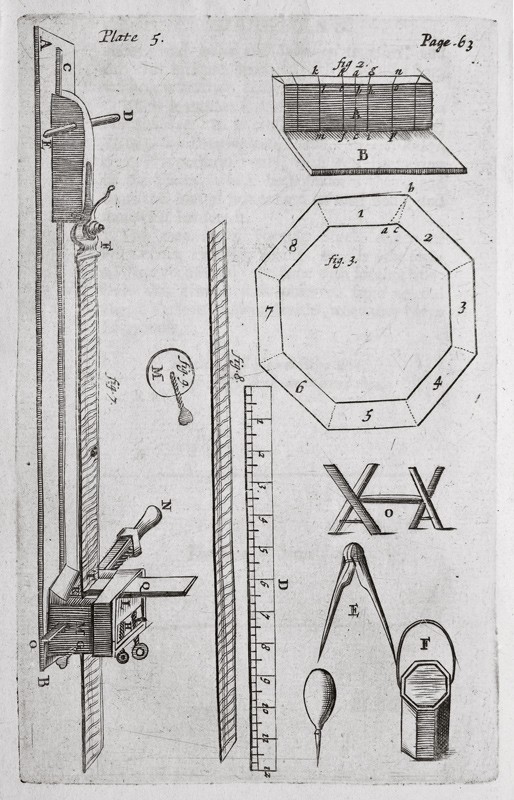
Plate 5 from Joseph Moxon’s Mechanick Exercises (1678). (Courtesy, Winterthur Museum.)

Painted chest, vicinity of Ortenburg, Bavaria, Germany. Materials and dimensions unrecorded. (Private collection; photo, Callwey Verlag.)10

Box, probably Monmouth County, New Jersey, 1744. Pine. H. 11 7/8", W. 7", D. 5 1/4". (Courtesy, Winterthur Museum; photo, Gavin Ashworth.) The painted initials on the lid suggest that the box was made for Antje Luyster of Monmouth County.

Detail of the compass-generated inlay on a drawer from a chest of drawers, Chester County, Pennsylvania, 1730–1750. (Courtesy, Winterthur Museum; photo, Gavin Ashworth.)
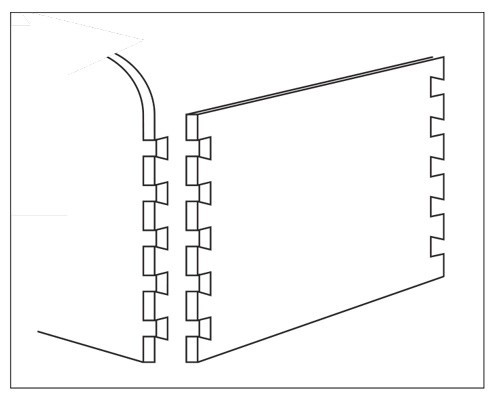
Line drawing showing how the front, side, and back boards of the dome-top boxes are dovetailed together.
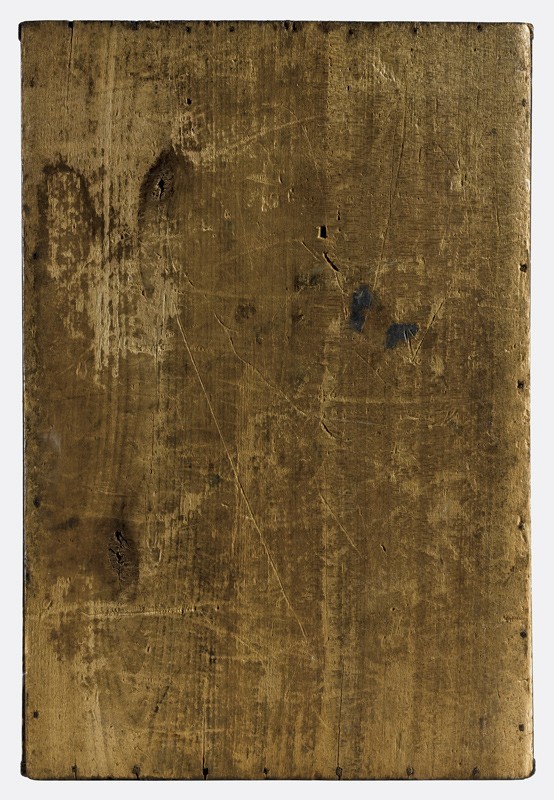
Detail showing the pinned bottom board of a box not illustrated in this article. (Courtesy, Winterthur Museum; photo, Gavin Ashworth.)
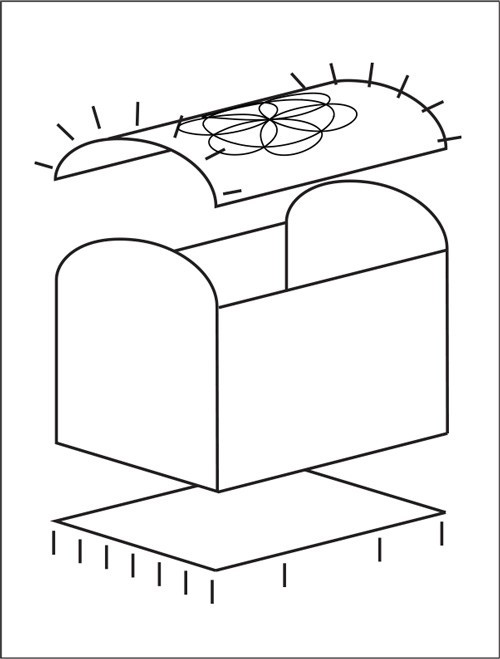
Line drawing showing how the top and bottom boards of the dome-top boxes are attached with small wooden pins.
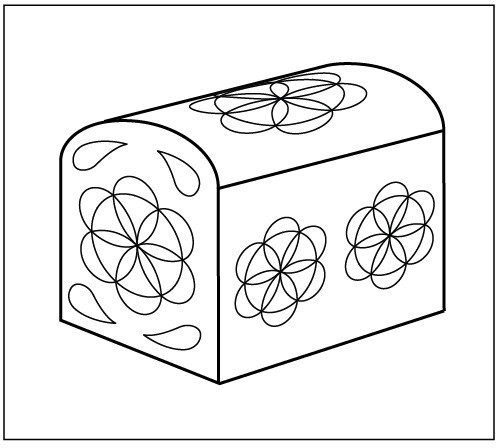
Line drawing showing how compass-work motifs were scribed on dome-top boxes.
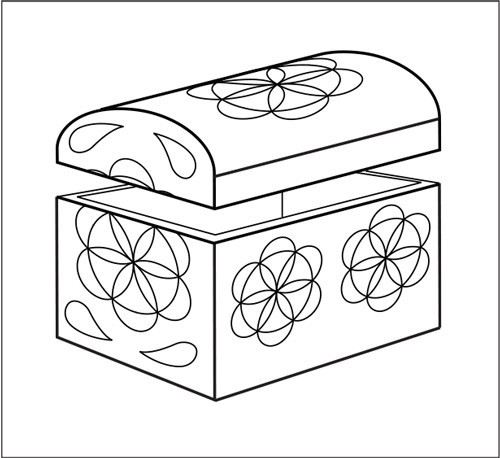
Line drawing showing how the dome-top boxes were sawn into two sections after the scribing was complete.

Detail of a bisected dovetail on the blue box illustrated in fig. 1b. (Photo, Gavin Ashworth.)
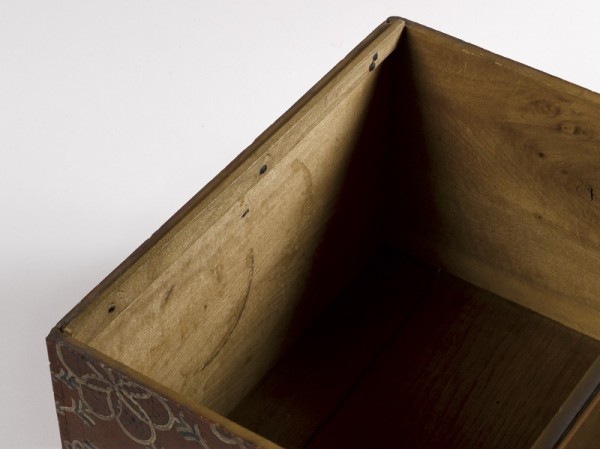
Detail of the alignment batten inside the large red box illustrated in fig. 1c. (Photo, Gavin Ashworth.)
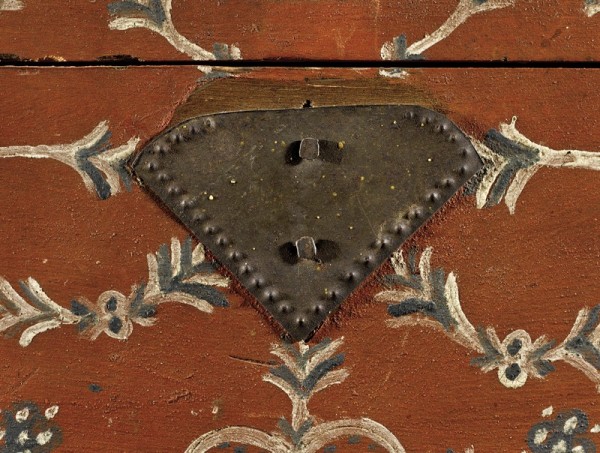
Detail of the bare wood behind the replaced escutcheon plate on the large red box illustrated in fig. 1c. (Photo, Gavin Ashworth.)
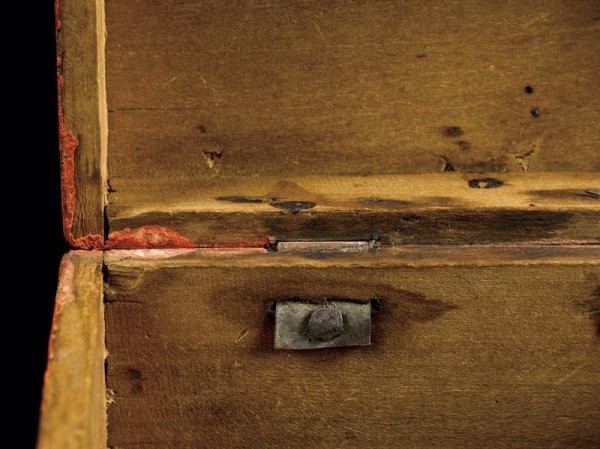
Detail showing interior paint drips and a hinge on the small red box illustrated in fig. 1a. (Photo, Gavin Ashworth.)
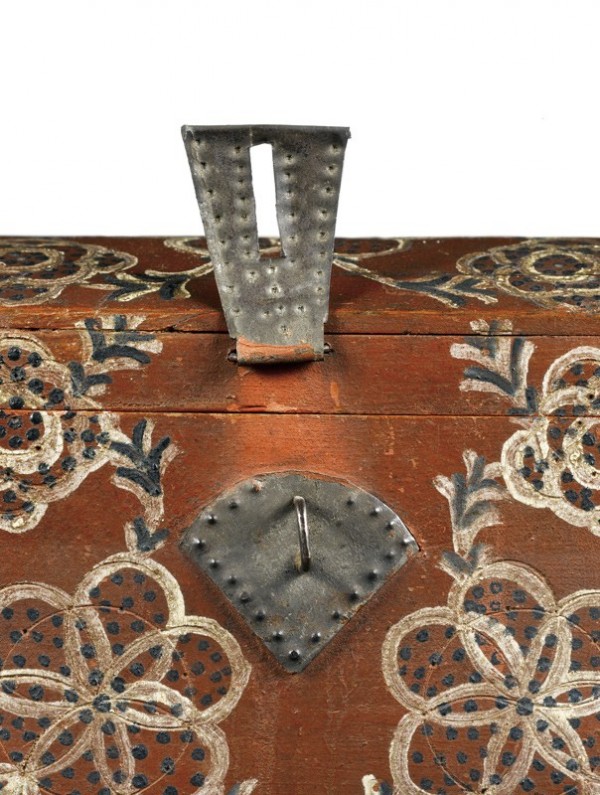
Detail of the escutcheon and underside of the hasp on the small red box illustrated in fig. 1a. (Photo, Gavin Ashworth.)

Detail of painted decoration that does not follow a scribed outline on the blue box illustrated in fig. 1b. (Photo, Gavin Ashworth.)

Detail of coin edging on the box illustrated in fig. 41. (Photo, Gavin Ashworth.)
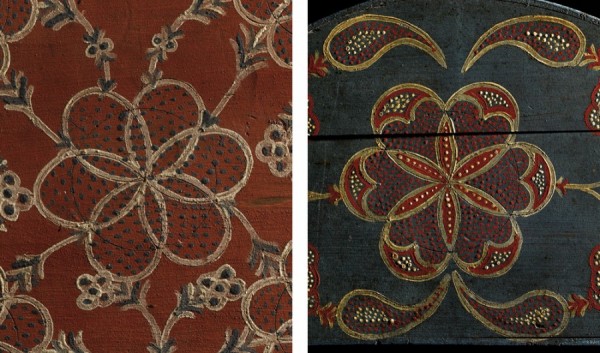
Comparison of two compass-work motifs, from the large red box illustrated in fig. 1c (left) and the box illustrated in fig. 41 (right). (Courtesy, Winterthur Museum; photo, Gavin Ashworth.)

Line drawing showing the scribing of a compass motif.
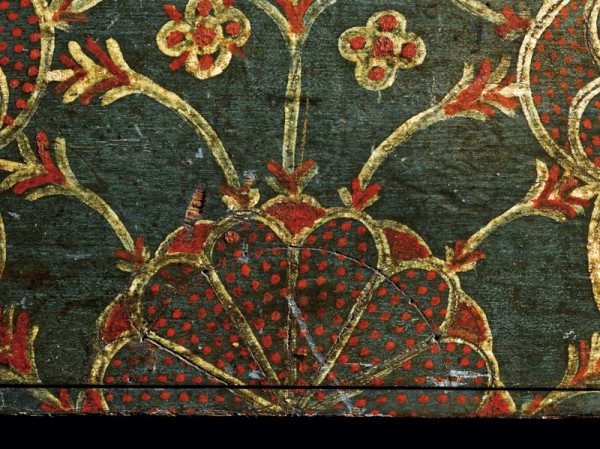
Detail of fan motif on a box not illustrated in this article. (Courtesy, Winterthur Museum; photo, Gavin Ashworth.)
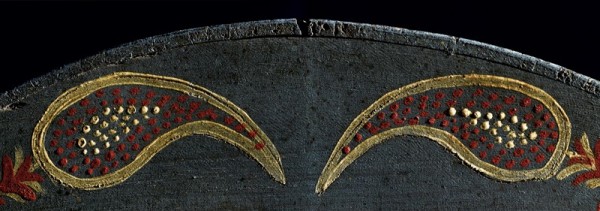
Detail of a half-tulip motif on the box illustrated in fig. 41. (Photo, Gavin Ashworth.)
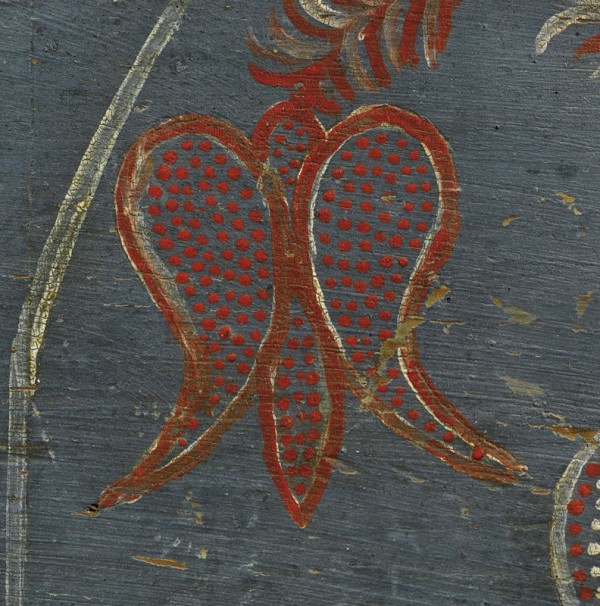
Detail of a tulip motif on the chest illustrated in fig. 34. (Photo, Gavin Ashworth.)
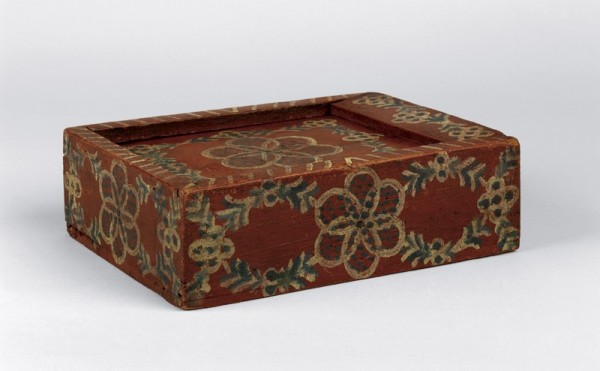
Box, Lancaster County, Pennsylvania, 1800–1840. Tulip poplar. H. 2 1/4", W. 5 3/4", D. 7 3/8". (Private collection; photo, Winterthur Museum.)
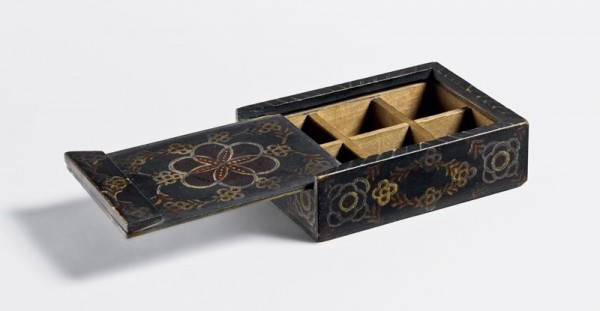
Box, Lancaster County, Pennsylvania, 1800–1840. Tulip poplar. H. 2 3/8", W. 8", D. 5 7/8". (Courtesy, Winterthur Museum; photo, Gavin Ashworth.) The interior of this box is partitioned into six compartments.
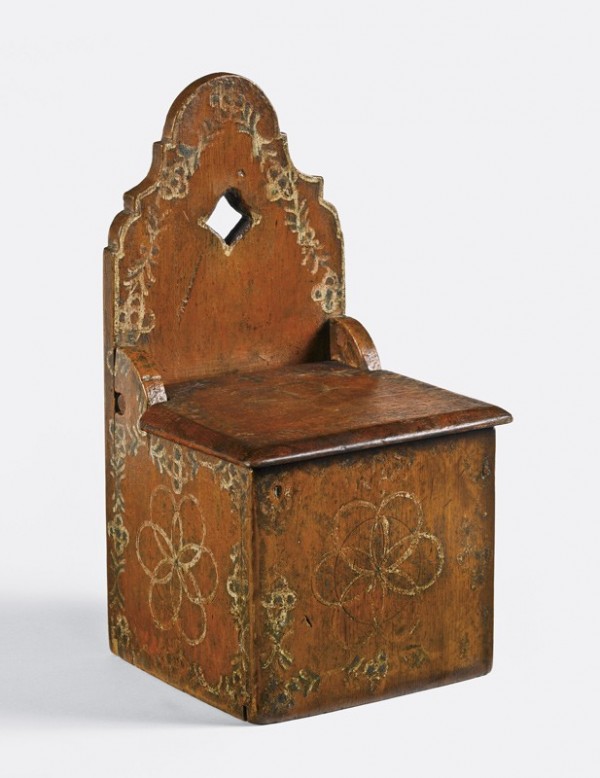
Saltbox, Lancaster County, Pennsylvania, 1800–1840. Pine. H. 12 1/4", W. 6 3/4", D. 6 3/8". (Private collection; photo, Gavin Ashworth.)
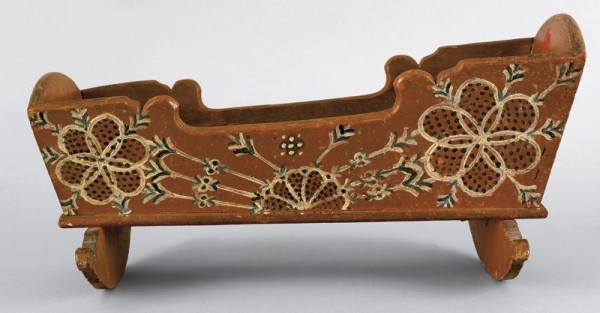
Cradle, Lancaster County, Pennsylvania, 1800–1840. Tulip poplar. H. 8", L. 16 1/2". (Private collection; photo, Pook & Pook.)
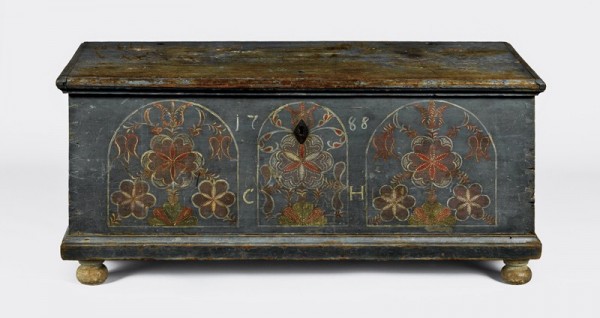
Chest, Lancaster County, Pennsylvania, ca. 1788. Pine, oak. H. 22 1/4", W. 48 7/8", D. 21 1/4". (Private collection; photo, Gavin Ashworth.)

Chest, Lancaster County, Pennsylvania, 1785–1820. Pine, oak. H. 23", W. 50", D. 22". (Courtesy, Dr. and Mrs. Donald M. Herr; photo, Gavin Ashworth.)
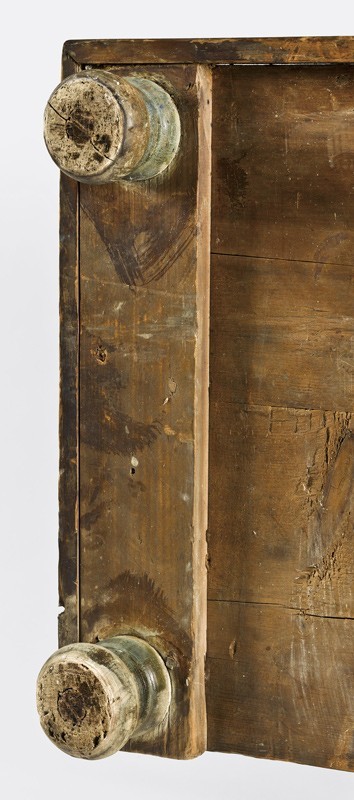
Detail showing the underside of the chest illustrated in fig. 34. (Photo, Gavin Ashworth.)
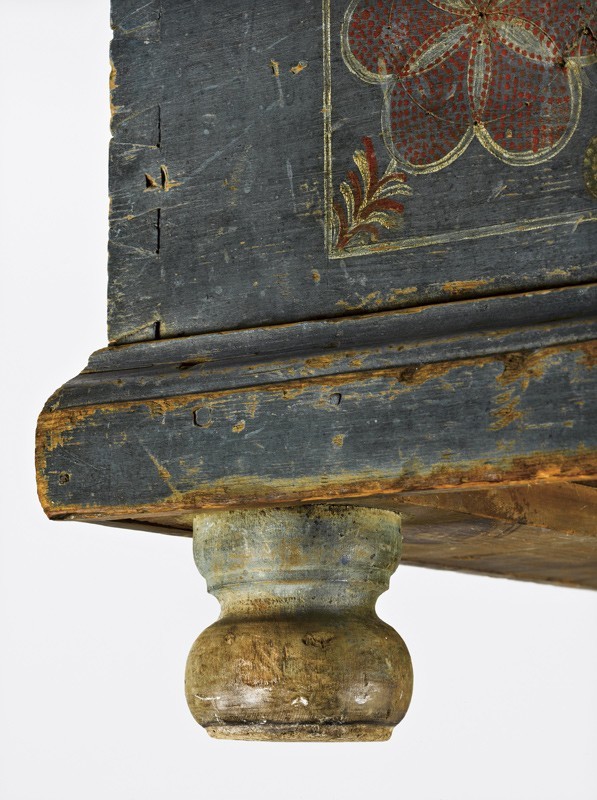
Detail of a foot on the chest illustrated in fig. 34. (Photo, Gavin Ashworth.)
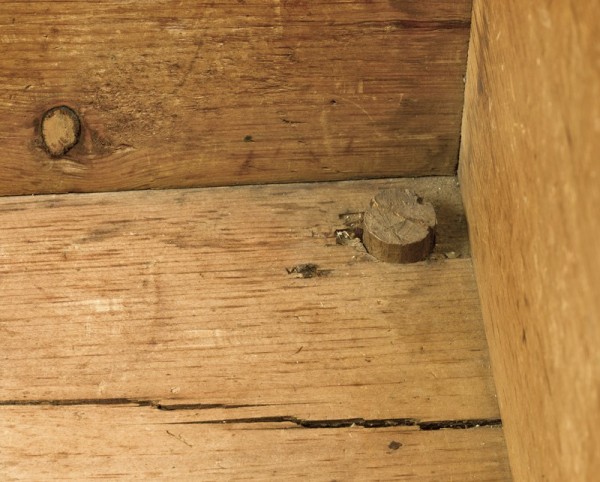
Detail of the wedged tenon of a foot on the chest illustrated in fig. 34. (Photo, Gavin Ashworth.)

Detail of the lock inscribed “GHEN 1802” on a chest with compass artist decoration not illustrated in this article. (Private collection; photo, Gavin Ashworth.)

Detail showing the mermaids drawn in chalk on the inside of the lid of the chest illustrated in fig. 35. (Courtesy, Dr. and Mrs. Donald M. Herr; photo, Gavin Ashworth.)
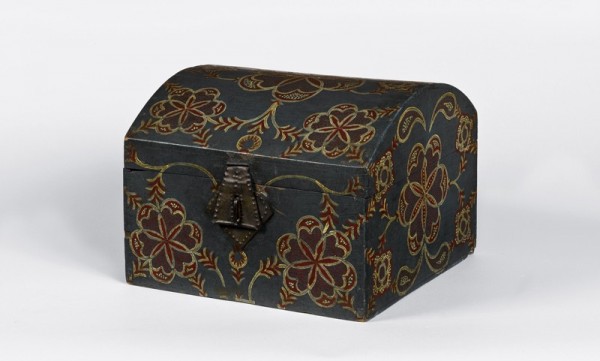
Box, Lancaster County, Pennsylvania, 1800–1840. Tulip poplar. H. 7 7/8", W. 10 3/4", D. 10 3/4". (Courtesy, Winterthur Museum; photo, Gavin Ashworth.)
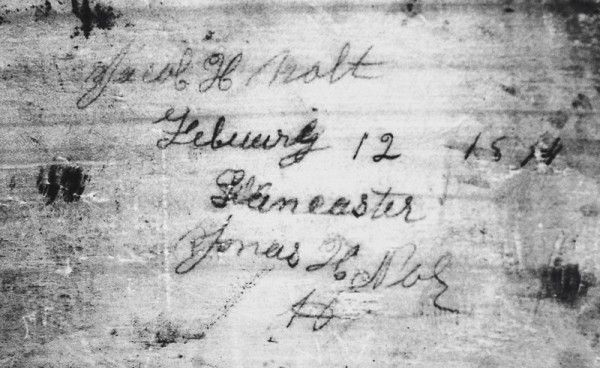
Infrared image of inscription “Jacob H Nolt / February 12, 18[ ]4 / Lancaster / Jonas H Nolt” on the box illustrated in fig. 41. (Photo, Winterthur Museum.)

Infrared image of the inscription on the small red box illustrated in fig. 1a. (Photo, Winterthur Museum.)
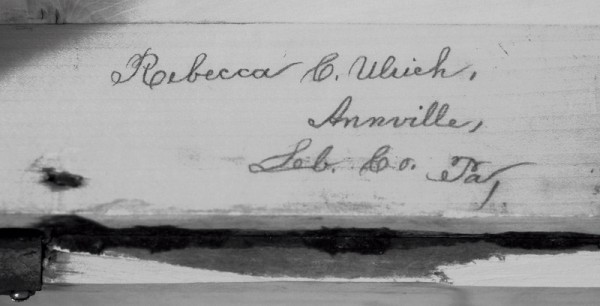
Infrared image of the inscription on a box not illustrated in this article. (Photo, Winterthur Museum.)
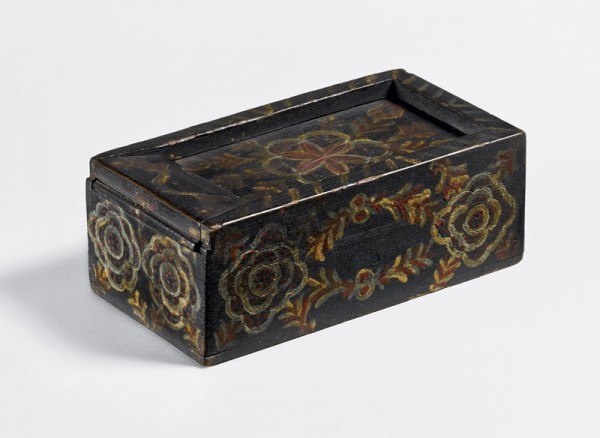
Box, Lancaster County, Pennsylvania, 1800–1840. Tulip poplar. H. 2 1/2", W. 3 1/2", D. 6 3/8". (Courtesy, Winterthur Museum, gift of Larry M. Neff in memory of Frederick W. Weiser; photo, Gavin Ashworth.)

Detail showing the underside of the box illustrated in fig. 45.

Map of southeastern Pennsylvania highlighting Lancaster and Lebanon counties with townships relating to owners of compass artist objects delineated.
